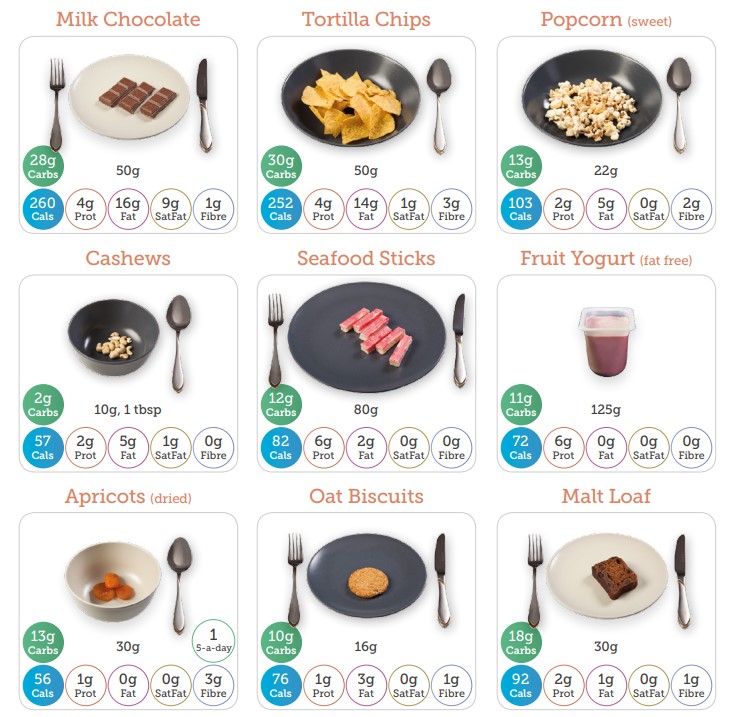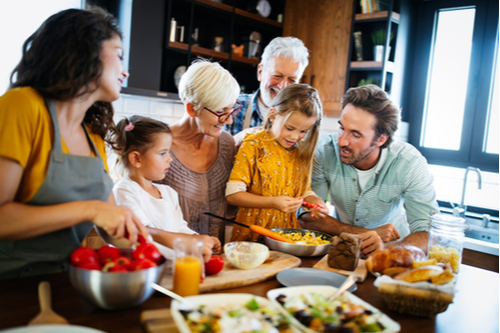Eating right

Healthy eating is important to everyone but is even more important if you have diabetes. This is because some foods that you eat will affect your blood glucose levels. If appropriate, you may be referred to a dietician or nutritionist for individual advice tailored to meet your own needs.
If you have diabetes, it is important that you have a grasp of how different foods will impact your blood glucose. The video below discusses this in more depth.
Trying to lose weight?
Trying to lose weight by changing your diet can feel overwhelming at first. It’s not easy, but it’s important to remember that you can achieve a lot by making small changes. Here are a few changes to consider.
Eating a balanced diet

Healthy eating guidelines for diabetes are based on the same guidelines that are applicable to the wider general population. It means eating a variety of foods in the correct proportions from different food groups each day.
The British Dietetic Association (BDA) is a great resource for advice about healthy eating and for further reading on the different food groups.
If you are trying to lose weight it is important to think about reducing calories. Calories mainly come from carbohydrate and fats. Diabetes UK has some great resources to help you with your weight management journey including information on eating a healthy diet, portion control and some healthy recipes to try out.
Portion control

To lose weight, we need to change our current habits. This means eating less – even when eating a healthy, balanced diet – and getting more active. One of the key areas of weight management is to look at your portion sizes. Reducing portion sizes can be a simple way of losing weight – reducing quantities of high calorie foods can particularly help.
Carbohydrates

Carbohydrate foods include sweet foods like desserts, chocolates, sweets and pastries and starchy foods like pasta, bread, potatoes, rice and foods containing flour. All carbohydrate foods eventually turn into glucose (sugar) in the bloodstream and can contribute to weight gain.
In diabetes, portion sizes, particularly of carbohydrates, have a big effect on blood glucose levels. The picture below, supplied by Carbs & Cals demonstrates this.

Low-carb diets

There are many ways to lose weight. Some people with type 2 diabetes have found that significantly reducing carbohydrates in their diet is a good way to both lose weight and better control their diabetes.
A low-carb diet means eating less than 130 g of carbohydrate a day. Foods that are high in protein can help you to feel fuller for longer, so reducing the amount of carbohydrate you eat and replacing it with protein can help to reduce the overall number of calories you eat each day.
The low carb program is a good starting point for increasing your carb-awareness and giving tips on how to follow a low carbohydrate plan.
Does glycaemic index matter?

Glycaemic index (GI) is a rating system used for carbohydrates that tells you how quickly certain foods will raise your blood glucose. Examples of food with a high GI include sugary soft drinks, sweets, potatoes and white rice or bread. Lower GI foods include wholegrain bread, porridge, vegetables, and pulses.
As low GI foods make your blood glucose rise and fall slower, they can help with weight loss by helping you feel fuller for longer and can make blood glucose control less erratic.
Choose the diet right for you

There isn’t one diet that is better than another for weight loss. What is important is finding something that works for you and the changes that you make to your diet are sustainable in the long-term.
Food type is linked with sugar response but people do differ in the way their bodies respond to certain foods
Food labels

It’s important to understand what’s in the food you eat so that you can control your intake of calories, sugar, fat and salt. Nutrition labels on food can often be difficult to understand at first sight, however, interpreting these labels properly can help to make healthier food choices simpler and easier.
The numbers on the packaging let us know if the food we are looking at is high in fat, sugar etc. or low or somewhere in between. Have a look below for some reference ranges to help you understand food labels in future:

Change your go-to snack

Snacks are anything you eat between your main meals, and they can be a source of extra calories.
Take a look at the calorie and carb content in each of the snack examples below and think about choosing snacks that might be healthier options:

It’s also important to think about the nutritive value of the food you eat – in the snacks above, the healthy options provide a range of vitamins, minerals, fibre and protein which are all essential to keep our body healthy.
Processed foods such as chips and chocolate offer little nutritive value and are generally higher in saturated fat, sugar and salt – all of which we need to limit in our diet
You can also make your snacks at home; probably in bulk so that they are there when you are hungry.
Regular meals

Regular meals with consistent quantities of nutrients may be important in stabilising blood glucose levels and helping control the appetite. An erratic meal pattern with variable quantities of carbohydrate can result in fluctuating glucose levels. Eating at regular times during the day helps burn calories at a faster rate and it also reduces the temptation to snack on foods high in fat and sugar.

Watch out for alcohol!
Alcohol contains a lot of hidden calories and sugar so it can be a cause of weight gain. Drinking too much alcohol can also reduce your body’s sensitivity to insulin which means that it doesn’t break down sugar as well as it should. This will result in higher blood glucose levels, which can make your diabetes more difficult to manage.
Do it together!

It can be really difficult staying on track with healthy eating if you feel you are doing it on your own. We need support from the people around us to help us achieve our goals. Think about making some changes as a family or consider joining a local support group.
There are many online support groups you can join too. You can find a group closest to you by clicking on the links below:
Make it yourself

This option isn’t for everyone but making food from scratch can be a great way to know what is in your food. Processed foods such as ready meals tend to be high in calories, saturated fat, salt and sugar so give them a miss when you can.
Have you got any weight management tips of your own? Something that works for some may not work for others so we’d love to hear about anything that you’ve found helpful!



Leave a Reply
You must be logged in to post a comment.